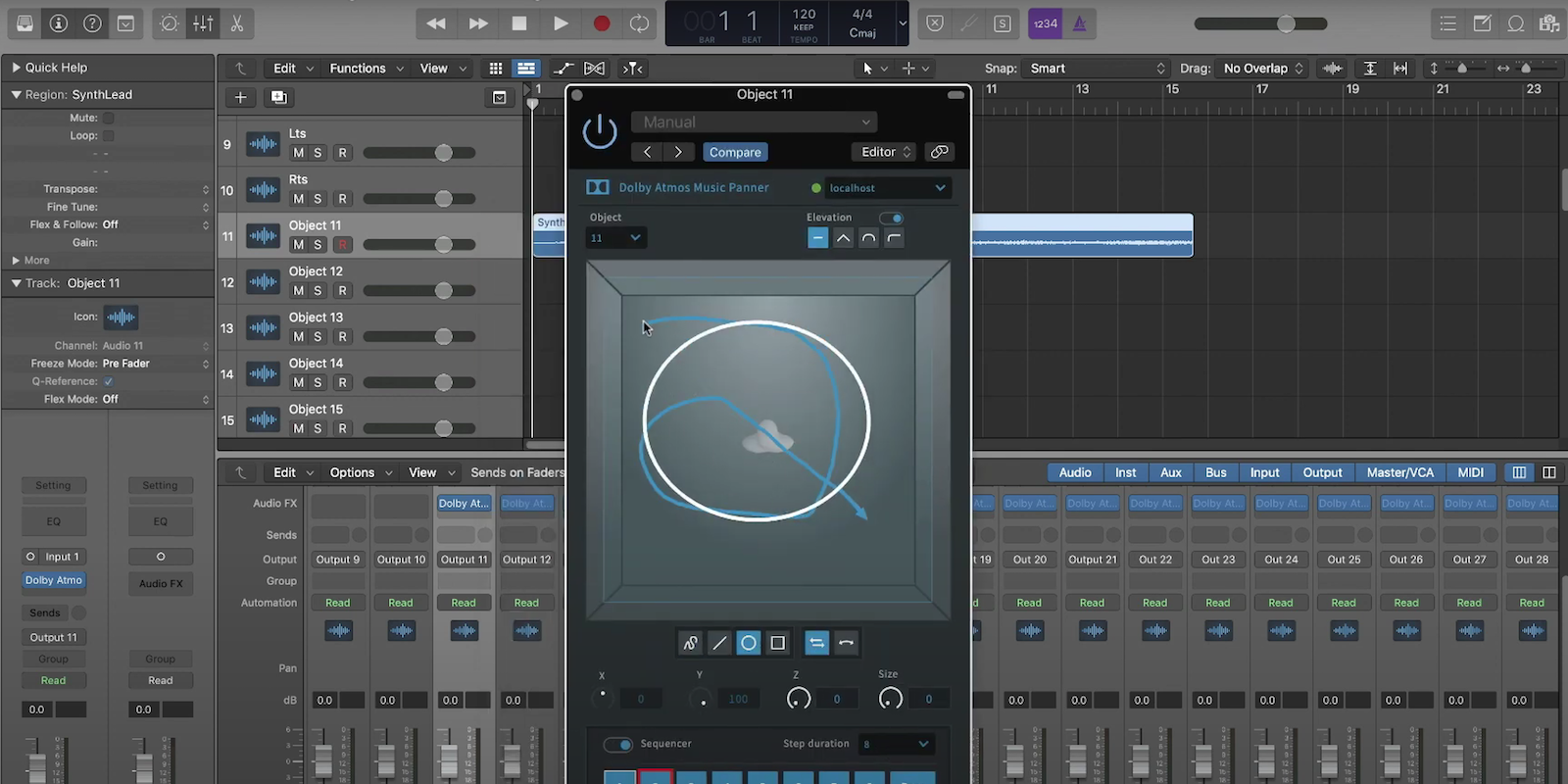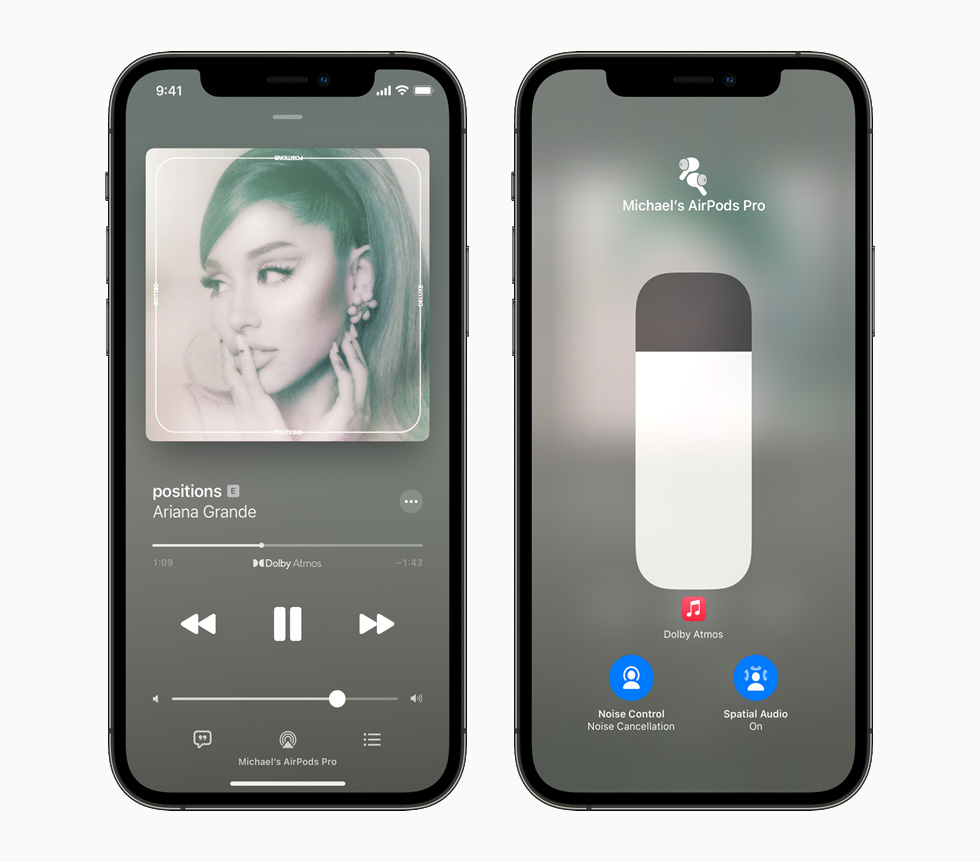To prepare your music for Apple Spatial Audio with Dolby Atmos, you need to mix and master it in a specific way. First, create a stereo mix and then include the spatial audio mix.
Apple recently introduced Dolby Atmos support for its music streaming service, allowing artists and producers to create an immersive audio experience for their listeners. However, to take full advantage of this technology, you need to prepare your music properly. One of the critical steps to achieving this is mixing and mastering your music in a way that translates well to the Spatial Audio format.
We’ll explain the steps you need to take to prepare your music for Apple Spatial Audio with Dolby Atmos, so your work can stand out and create an unforgettable experience for your listeners.

Credit: 9to5mac.com
1. Understanding Spatial Audio With Dolby Atmos
Learn how to optimize your music for Apple’s Spatial Audio with Dolby Atmos. Understanding Spatial Audio is essential in preparing your music for the best immersive experience.
If you’re a music artist looking for ways to enhance your music experience and engage with your audience, you need to know about Spatial Audio with Dolby Atmos. This technology creates a 3D audio experience for listeners, bringing them into the heart of the music.
1.1 What Is Spatial Audio With Dolby Atmos?
Spatial Audio with Dolby Atmos is a technology that creates a 3D audio experience, which elevates the listening experience for the audience. Unlike traditional stereo audio, Spatial Audio immerses listeners within a soundscape that envelops them, providing the feeling of being in the center of music, no matter where they are.
1.2 How Does Spatial Audio With Dolby Atmos Work?
Spatial Audio with Dolby Atmos works by incorporating metadata into the music tracks that allows the sound engineer to place sounds in 3D space. The listener hears the music as if they’re in the middle of the soundscape, with instruments and vocals coming from different directions. The feeling is that of being in the center of the music, surrounded by the sounds, resulting in a more immersive listening experience.
1.3 Why Is Spatial Audio With Dolby Atmos Important For Music Artists?
Spatial Audio with Dolby Atmos is essential for music artists because it creates a more engaging and immersive music experience for listeners, which can lead to increased streaming and sales. As more music platforms adopt this technology, it is wise for music artists to prepare their music for Spatial Audio with Dolby Atmos to stand out from the competition and provide their fans with an incredible experience.

Credit: www.masteringthemix.com
2. Preparing Your Music For Spatial Audio With Dolby Atmos
Preparing your music for Apple Spatial Audio with Dolby Atmos involves following certain guidelines for the best experience. Enhancing your tracks’ depth and dimensionality, optimizing the mixing, and using quality audio equipment are some prerequisites for delivering an immersive listening experience on compatible devices.
Preparing Your Music for Spatial Audio with Dolby Atmos is an essential process that can make or break your music career altogether. Therefore, it is crucial that we give special attention to this aspect of music production to ensure that our music reaches our audience in the best possible way. In this section, we will discuss the step-by-step process of preparing your music for Spatial Audio with Dolby Atmos, including the technical specifications, preparing your music for the mixing stage, working with a professional music mastering engineer, utilizing Apple’s Spatial Audio tools for mixing and mastering, and delivering your music in Spatial Audio with Dolby Atmos on Apple Music.
2.1 The Technical Specifications Of Spatial Audio With Dolby Atmos
To prepare your music for Spatial Audio with Dolby Atmos, you need to understand the technical specifications of this new technology. Spatial Audio with Dolby Atmos requires higher bit rates and sample rates to accommodate the additional audio channels. In addition to this, the audio must be mixed and mastered in a specific way to take full advantage of the feature.
2.2 Preparing Your Music For The Mixing Stage
Once you have a good grasp of the technical specifications, it is time to prepare your music for the mixing stage. This includes selecting the individual tracks that you want to isolate and process in Spatial Audio. The most effective way to do this is by using multi-track stems. You should also ensure that each track has a clear and distinct sound.
2.3 Working With A Professional Music Mastering Engineer
Working with a professional music mastering engineer is highly recommended when preparing music for Spatial Audio with Dolby Atmos. The mastering engineer will help you fine-tune your music and optimize it for Spatial Audio. They will also make sure that your music meets the technical specifications required for Spatial Audio with Dolby Atmos.
2.4 Utilizing Apple’s Spatial Audio Tools For Mixing And Mastering
Once you have a final mix, you can use Apple’s Spatial Audio tools to polish your music further. The tools allow you to create a more immersive listening experience by placing audio elements in specific locations around the listener. This works by simulating the sound of a physical space, such as a concert hall.
2.5 Delivering Your Music In Spatial Audio With Dolby Atmos On Apple Music
After completing all the above steps, it is time to deliver your music in Spatial Audio with Dolby Atmos on Apple Music. Before doing this, you need to ensure that your music meets the technical specifications required by Apple Music. This includes having your music encoded in Apple’s Lossless Audio Codec (ALAC) format. Once you have satisfied all the requirements, you can submit your music to Apple Music and start reaching your audience in a new and exciting way.
3. Tips On Achieving Optimal Spatial Audio Results
To achieve optimal spatial audio results for your music on Apple Spatial Audio with Dolby Atmos, follow these tips: Use a high-quality audio mastering software, mix efficiently with detailed attention to sound balance and placement, and ensure that your tracks are compatible with the Dolby Atmos codec.
3. Tips on Achieving Optimal Spatial Audio Results: Optimizing music for Apple Spatial Audio with Dolby Atmos is no longer an option but a must for music producers, sound engineers and artists wishing to deliver an immersive experience to their listeners. Luckily, achieving optimal spatial audio results is not rocket science but takes careful consideration of a few essential factors. In this section, we discuss three top tips to follow for the best spatial audio experience possible.
3.1 Understanding And Optimizing The Immersive Experience Of Spatial Audio With Dolby Atmos
To fully comprehend the immersive audio experience, one needs to understand how Spatial audio works. Unlike traditional stereo audio, which uses two channels to deliver sound (left and right), spatial audio uses multiple channels, allowing sounds to come from all sides, including above and below the listener. This allows for more immersive soundscapes that make the listener feel like they’re part of the music. To optimize the immersive experience, ensure that your mix delivers a perfect balance of individual sounds. Each instrument should have its unique space in the mix, and the listener should feel as though they’re standing in the middle of a surround sound system.
3.2 Techniques For Optimizing Spatial Audio With Dolby Atmos For Different Music Genres
Different genres of music require different approaches to deliver the best Spatial audio experience. For instance, rock music benefits from wider stereo panning and fewer channels, whereas orchestral and classical music benefit from a more immersive and realistic experience that requires multiple channels. Take time to understand the unique properties of the music genre you’re working with before mixing your music.
3.3 How To Ensure Optimal Compatibility Of Spatial Audio With Dolby Atmos Across Different Devices And Headphones
Compatibility issues are common when working with Spatial Audio, given the various devices and headphones available in the market. To ensure that your music is compatible with all devices, ensure your mix is balanced and consistent. Also, consider using metadata to tag your music files to ensure that streaming services can recognize and deliver your music in Spatial Audio. Testing your Spatial Audio mix on different devices and headphones is also crucial to guarantee perfect compatibility.

Credit: www.apple.com
Frequently Asked Questions For How To Prepare Your Music For Apple Spatial Audio With Dolby Atmos
How Do I Get The Most Out Of Dolby Atmos On Apple Music?
To get the most out of Dolby Atmos on Apple Music, you must have a compatible device, such as an iPhone, iPad, Mac or Apple TV. You also need to have a Dolby Atmos enabled track and audio system. Finally, make sure to enable Dolby Atmos in your music playback settings.
What Format Does Apple Music Use For Dolby Atmos?
Apple Music uses Dolby Atmos in the lossless ALAC (Apple Lossless Audio Codec) format for their paid subscribers. This format ensures the highest quality of music and immersive sound experience.
What Do You Need For Apple Music Spatial Audio?
To enjoy Apple Music Spatial Audio, you’ll need a compatible device, such as an iPhone, iPad, or Mac running the latest software. You’ll also need to be subscribed to an Apple Music streaming plan that includes access to Spatial Audio content.
That’s it! Happy listening.
How Do I Know If Dolby Atmos Is Working On Apple Music?
To know if Dolby Atmos is working on Apple Music, play a Dolby Atmos-supported song on a compatible device. If it’s working, the song will have a Dolby Atmos icon and you’ll hear a 3D sound experience. Additionally, you can check the audio settings on your device to ensure Dolby Atmos is enabled.
Conclusion
Preparing your music for Apple Spatial Audio with Dolby Atmos is an essential step in taking advantage of the latest advances in immersive audio technology. By ensuring your mix is encoded correctly and meets the necessary standards, you can offer your fans a truly breathtaking listening experience that brings your music to life like never before.
Follow the guidelines we’ve outlined in this post, and you’ll be well on your way to creating exceptional Dolby Atmos content that will delight your audience and enhance your creativity as a music creator.